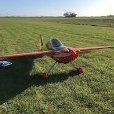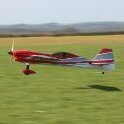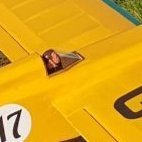All Activity
- Past hour
-
John Brisrow of Delux Materials went into the science of adhesives on a BMFA In the Air Tonight presentation about a year ago. I can’t remember if he covered your exact query but you should find it of interest.
- Today
-
I've recently acquired a complete fuselage - but unfortunately the wing was sold at a local table top sale!! So - just in case anyone reading this, or who happens to know who bought a transparent yellow vintage wing from the recent Phoenix MAC table top sale at Chelford Village Hall, please get in touch. I was planning to use the Zephyr to teach my granddaughter to fly. Many thanks
-
https://www.modelshopleeds.co.uk/catalog/product_info.php?cPath=26_69&sort=1a&products_id=9389 Just one (albeit out of stock) option, I'm sure there are many others.
-
I prefer the tiny screws from model fixings, for the simple reason that it renders the canopy/screen removable if necessary. I have tried covering after canopy/screen is glued in place but it has generally been rather unsuccessful.
-
With the exception of the pilot, the only things I could take out at this point are forward of the CoG, so they'd just get replaced with lead anyway.
-
I read Piers talking about flaps. Differntial aileron: no washout, ARTF: 68 inch chipmonk, weighs 8lbs.
-
I wish. The only way I could make it work in the space available was with multiple linear actuators and a control board. Unfortunately the budget wasn't as big as the ideas.
-
Zorba, I think you are describing acrylic or Perspex (same stuff) sheet in Europe. Usually minimum thickness is 1 mm. it would do what you describe the American product doing. I assume you mean the USA
-
For what it's worth, I just use tracing paper. Trace the parts with a thin sharpie or rotring pen. Cut out, glue the paper pattern to the wood with pritt stick and draw around it with a pencil. Then just cut to the inside of the pencil line.
-
People to whom the 1930s, 40s and 50s were as significant as the 1970s and 80s are to most of the contributors here. For the Americans, the golden years were the 1930s when balsa wood and petrol engines first appeared in large quantities. Over here, power flying was banned in the war, so the mid to late 1940s and 50s were of greater importance. The question is whether vintage should focus on the models or the participants? In car terms, the Ford Model T may be more significant to the development of the automobile, however a Mk1 Escort or Capri is more likely to evoke more memories for those with the time and money to buy and restore them now.
-
Or at all. Every sliding canopy i have ever seen has done one thing, and one thing only. Fall off. They look cool, but every one i have ever seen has made a bid for freedom in short order!
-

Spring is here again - who's been flying?
Adrian Smith 1 replied to GrumpyGnome's topic in Flying Field Reports and Chat
I had to scrape the frost off the car before I ventured to the field this morning, although the sunny start provided all the encouragement I needed get out and fly 😀 I wheeled out the Sbach 342 which hadn't seen the wide blue yonder since January. Three glorious flights with her. I had forgotten how frisky this plane is. If the cold hadn't woken me up, the first minute or too in the air would have done. Ops. were curtailed after that due to the tail wheel connecting rod to the rudder coming loose. This has happened before and despite filing a flat on the rod and using blue thread lock on the grub screw it has happened again. I can't say I am surprised as the tail takes the occasional thump on landing. I am going to have a think on doing some sort of modification the stop it happening. -
Quite, it really needs its own Topic - A Big Question.
-

Charging LiPos at 4C
Duncan Disorderly replied to Duncan Disorderly's topic in Batteries and Chargers
I used to be you! I used to be able to take a perfectly decent LiPo and make it cylindrical... It's why the first post in this thread is so long and boringly detailed - because I don't know which bit of my regime has suddenly stopped my battery malaise. I think it might be a combination of all of the things I listed but, weirdly, this all really took off when I started charging at 4C - the very act that everybody told me would ruin everything. I think there's something in having them only holding a charge for 10 mins; there's definitely something in only charging them to 4.15v or so (this won't affect your flight times at all and may double your battery life at a single, simple stroke - and, if you think about it, there's absolutely no incentive for battery manufacturers to advise you to do this), and leaving 50% in at the end of the flight seems to really help too - but I appreciate that you need a charge box to do this effectively, or you run out of LiPos pretty quickly. I think the charge box is the answer to electric flight - since having it I haven't bought a single LiPo and have had hundreds of flights. That's with a charging regime where I've actually tried to kill the LiPo with 12A. You've already got a charger and my 40Ah of Li-ions cost less than £100 (I made 2 packs, so £200, but just scale it to your needs - at 3S you could get away with a £30 Li-ion pack), which means I only have to buy 2 LiPos for any plane I own, and can fly all day pretty much non-stop. It then allows you to put into practise a MUCH better regime for charging, because they're not sat holding charge for 24 hours and you're not trying to drag every last millivolt out of them - you just give them a quick 50% topup and off you go again. Also - throttle! Most people use way too much. Which is fine if that's what you like doing, but it will cost. Also - high C batteries - maybe try one?- 5 replies
-
- battery charging
- c rates
-
(and 1 more)
Tagged with:
-
I don’t pretend to be an expert but it depends…. Is the model over weight, a high wing loading? Does it always drop one wing? Were the wings built with any washout? Are the ailerons differential in operation (more up than down)? More questions than answers here unfortunately. Small deflections of flap can lower the stalling speed effectively to some degree. How much (%) depends on the type and area of flap. Further deflection of flaps will principally increase drag with little further reduction of stalling speed. At the point of stall if an aircraft is being flown out of balance (yawing) this will often precipitate a wing drop. Adverse yaw from ailerons can cause yawing at slow speeds. This is reduced by differential aileron deflection which is why most full sized aircraft has this. To answer your question Maurice (!) flaps can actually exacerbate a wing drop at the point of stall! Not too sure what this has to do with ‘The Big Question’ though 🤔.
-

Charging LiPos at 4C
Duncan Disorderly replied to Duncan Disorderly's topic in Batteries and Chargers
Yes - flying didn't fit around work very well, so I went freelance and now work fits in around flying. I can work when it's dark/windy/raining, so I rarely miss a flying day if there's one to be had. I'm a good pilot but it's all hard work and zero talent, so I have to put the hours in. There are approx 15,000 manouevres in the Aresti book of aerobatic descriptions. I can learn - to a decent standard - about 3 per year, so if I want to reach 1% of them I'll have to go at it for 50 years... It's like playing a musical instrument - you get better all the time but you never reach "the end".- 5 replies
-
- battery charging
- c rates
-
(and 1 more)
Tagged with:
-
I struggle to get 50+ cycles out of my 2200maH lipos which are charged at 1C and have a very easy life.
- 5 replies
-
- 1
-

-
- battery charging
- c rates
-
(and 1 more)
Tagged with:
-
Oliver Battleaxe 2cc 1946 v/rare
-
We had those on the NDN Firecracker. Don't remember what effect they had though. Nige
-
Thanks for the suggestions. I've got to go out for a few hours so won't be able to reply for a while. John
-
Could it be a Dyno 2cc? Original, some reproductions were made.
-
Warbirds Replicas Hawker Tempest V -Mass Build 2024(part two) .
GrumpyGnome replied to RICHARD WILLS's topic in Warbird kits
Payment delivered. Build will have to wait as I already have three models to complete...... -
Nipped out to maiden the 2m RES Mirai I've just finished. I've decided to have a go at some of the FxRes comps' this year, particularly as Kent Interclub is running it's own league for the first time. Some trimming needed but it went well in damp and windless conditions. I got the AUW down to 540g, whether that's enough we'll see.
-
Link









